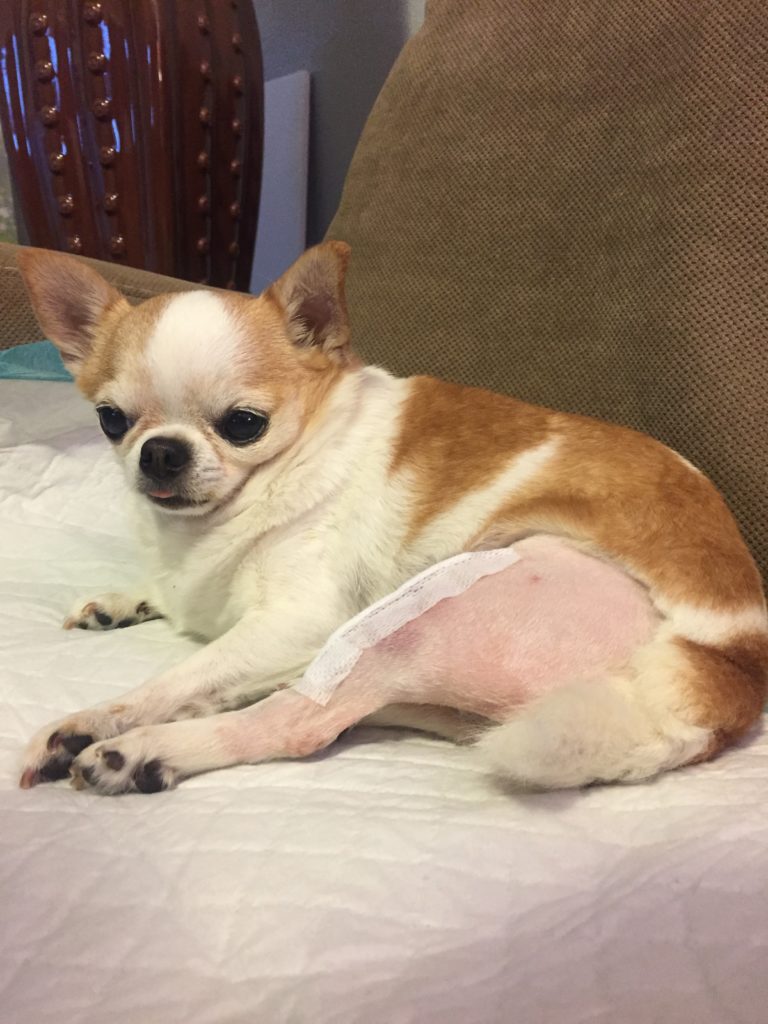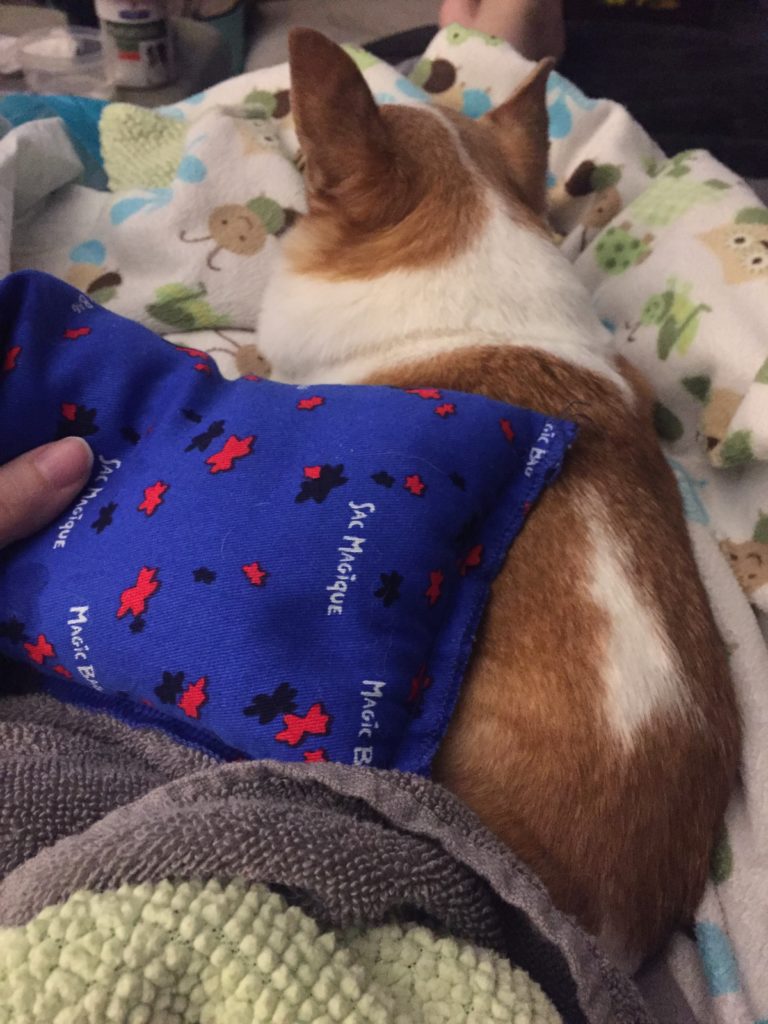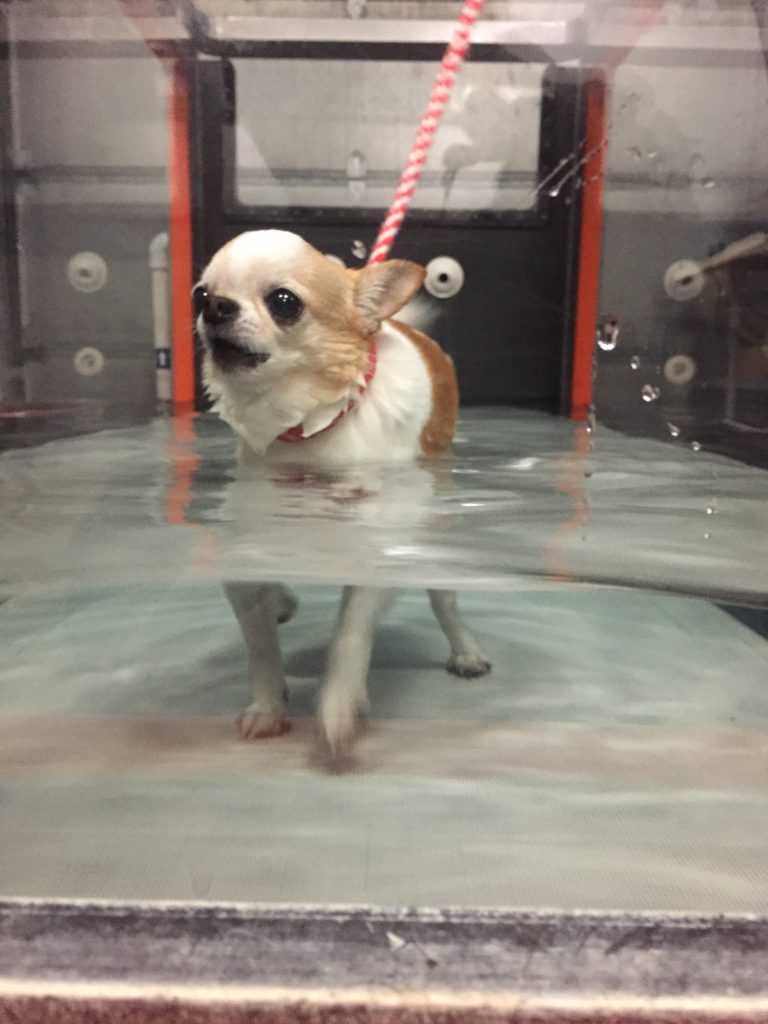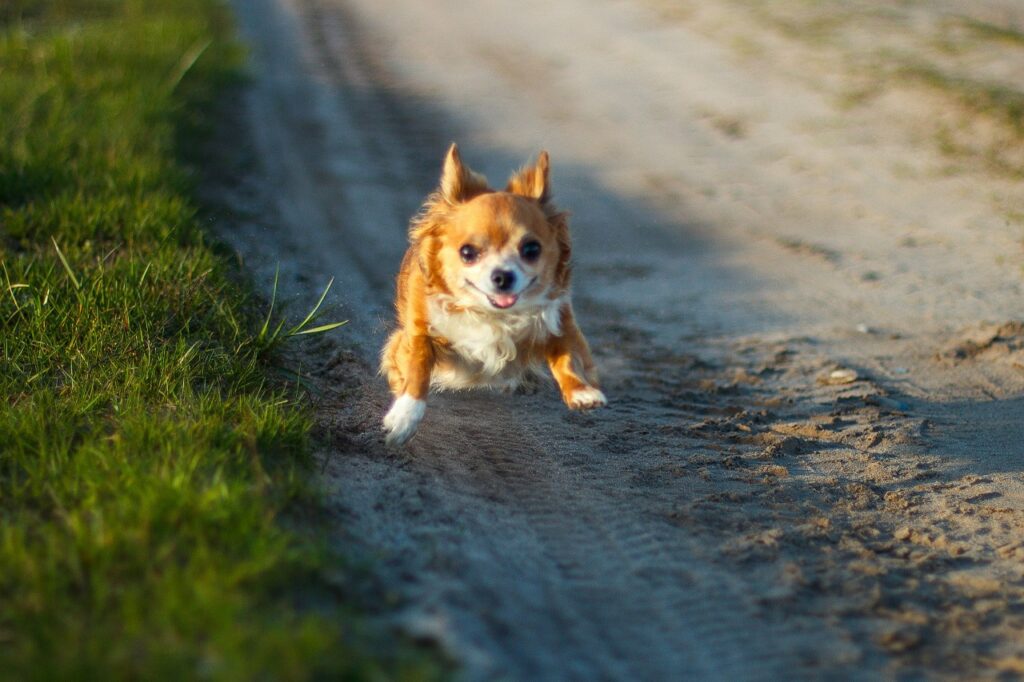Table of Contents
What Is Luxating Patella?

A luxating patella is a patella (kneecap) that does not remain in place. This condition only affects the hindlimbs. Normally the patella (kneecap) sits within the trochlear groove on the femur, a luxating patella is when the patella is no longer in its normal location within the groove. So, it is a kneecap that is out of place!
To facilitate the movement of the joint, there is a patellar ligament located on top of the kneecap that extends from the thigh muscle to the center of the front of the shin bone, also known as the tibia bone. This allows for muscle contraction to be transmitted through the ligament, pulling the shin bone resulting in straightening or bending of the knee. During this movement, the kneecap moves in its groove to help keep the ligament in place.
For some dogs the patellar ligament is not attached in the centre of the shin bone, instead it is “offset” medially (towards the body). This means that when the muscles contract, the force causes the kneecap to be pulled towards the inside of the leg. This repetitive movement over time results in the groove wearing down. When this happens, the kneecap will dislocate towards the inside of the leg.
How Are Luxating Patellas Diagnosed?
Your veterinarian will be able to feel a luxating patella during a physical exam. They will likely recommend radiographs to further diagnose the grade of luxation. This condition is graded on a scale of 1-4. 1 being mild, where the kneecap luxates but can be put back into normal position and 4 being severe, where the kneecap does not go back into normal position and spends majority of the time luxated.
Who Is Affected By Luxating Patellas?
Any breed of canine is subject to developing luxating patellas. That being said, it is much more common in smaller and toy breed dogs. Some of the most popular breeds to develop this condition are; chihuahuas, yorkies and toy poodles. Dogs usually start to develop this condition at about 2-3 years old.
How Can You Tell If Your Pet Has Luxating Patellas?
When they develop this condition you may notice that they will not bear weight on the leg(s) affected. But this may be temporary, meaning you may see them hop on 3 legs, and then suddenly they are back on 4 legs because the kneecap has wiggled its way back into a more normal position again. It varies for each individual. As for their mobility, it can decrease mildly or drastically, depending on the grade of the luxation. You may notice that your dog is no longer willing to walk on tile or hardwood floors as they are more slippery making them feel even more unstable. They may only walk on carpets and rugs.
What Is The Treatment?

Some dogs may develop this condition and be able to tolerate it. Whereas, majority of dogs will require further treatment. Especially since the luxation does progress as the dog ages.
To remedy luxating patellas surgery must be performed. While supplements may be recommended to support the joint health of your pet, they cannot repair a luxating patella. As this is an issue with the actual osteology and supplements cannot help keep the patella in place. This surgery is performed by board-certified surgeons and will likely require a referral from your regular veterinarian. The prognosis is usually excellent. If your pet has luxating patellas on both hind legs, then you will want to get both repaired if possible. They can both be repaired at the same time, or individually. Usually, surgeons will recommend getting them repaired one at a time as it increases the success rate of surgery and makes recovery easier on your pet (and you!).
Surgery can greatly improve your pet’s quality of life. You may not notice how altered their gait (walking) is until after surgery when you can see astonishing improvement.
If you are unable to accommodate getting surgery for your pet, your veterinarian may have other suggestions such as pain medication. Additionally, rubber socks/booties can help provide stability when your pet is walking and may help if your pet does not want to walk on slippery floors.
Cost of Surgery
This will range depending on the hospital and your geographical location. Typically surgery to repair a luxating patella is anywhere from $3500-4500, per surgery. It may not necessarily be double the price if two knees are being repaired during the same surgery, but it will cost more than one knee alone. It is important to ask your surgeon or regular veterinarian for a more accurate quote, this is just a general “ballpark” figure.
Recovery After Surgery

After surgery has been done, your pet may take a few weeks to recover. But you will be surprised how resilient they are! The surgeon will likely prescribe antibiotics to prevent infection and pain medication. As for home care, your surgeon may instruct you to ice your pet’s knee throughout the day to reduce inflammation. This will help with pain as well! You may also be provided with exercises to help your pet regain range of motion in the affected joint(s).
Overall, recovery is quick and relatively easy (especially for us pet owners!). As mentioned before, pets are very resilient and typically do well post-surgery. I saw this with great confidence as I have been down this road with my pet Minnie, pictured here, twice.You will find that your dog will be able to get around on 3 legs well during recovery and will soon place weight on the affected limb.
Along with your home instructions, your surgeon will likely recommend physical rehabilitation. Typically this takes place two weeks after surgery. This may include underwater treadmill, laser therapy, and/or physical therapy exercises. This may not always be mandatory but is usually highly recommended to ensure success after surgery. Physical therapy helps the patient regain strength in their affected leg(s) but in a safe environment. For instance, the underwater treadmill allows your pet to build muscle on that leg without having to put full weight on that limb while recovering.
The most important part of recovery is keeping your dog quiet. Meaning, no running, jumping or playing. It is important for the tissue in that joint to heal and regain stability.

Minnie’s Story

On a personal level- I have experienced luxating patellas with my own dog, Minnie, twice. I highly recommend doing this surgery for your pet if you can. Prior to surgery, I noticed that she was no longer willing to walk on hard surfaces such as wood and tile flooring. I had to lay rugs down to allow her to hop from rug to rug to get around. Her mobility was so hindered but I didn’t realize to what extent until I saw such great improvement following surgery.
I was concerned for how she would recover but, knew that it would pay off in the end. Much to my surprise, she handled recovery very well- as most pets do! She had one knee done at a time, a couple of months apart. If you live somewhere that experiences winter, I suggest doing this surgery in the spring/summer so that your pet doesn’t have to recover in the cold weather. Minnie was unstable on her affected knee for about 2-3 weeks post-surgery, I believe it would be more challenging to recover if there is ice on the ground.
Moreover, I used a sling after surgery, especially the first one. This was because she was more wobbly after the first surgery since her remaining knee was still needed repair. Since she is so small I used a boxing wrap to help support her hind end as she went outside to do her business. I did this for her second knee surgery as well, but it was less necessary as she was more stable on her new knee. Following both surgeries I used a dog stroller as well. It allowed her to still “go on” walks while recovering since you have to restrict their movement.
Frequently Asked Questions
When the patella luxates, if it is a low grade luxation it will be able to go back into place. That being said, it will continue to luxate out of place. The patellar luxation will gradually get worse and become more frequent with time. To actually repair a luxating patella surgery must be done.
Yes, a dog can survive with a luxating patella. This condition does negatively affect mobility though and causes discomfort.
Yes, it can cause pain and discomfort. When the kneecap luxates it does not allow the joint to function properly. Arthritis can develop as a result, leading to more discomfort and pain. Moreover, the luxating itself can be uncomfortable to experience.
The only true treatment for luxating patellas is doing surgery to repair the groove within the knee. While supplements help support the joint, they cannot fix a luxating patella.

